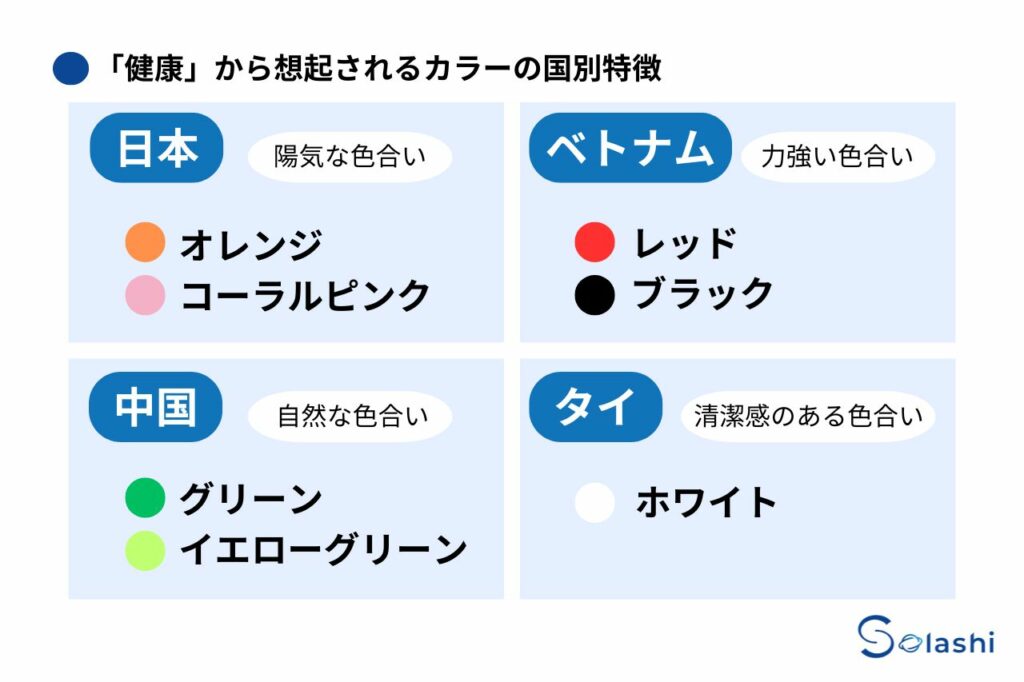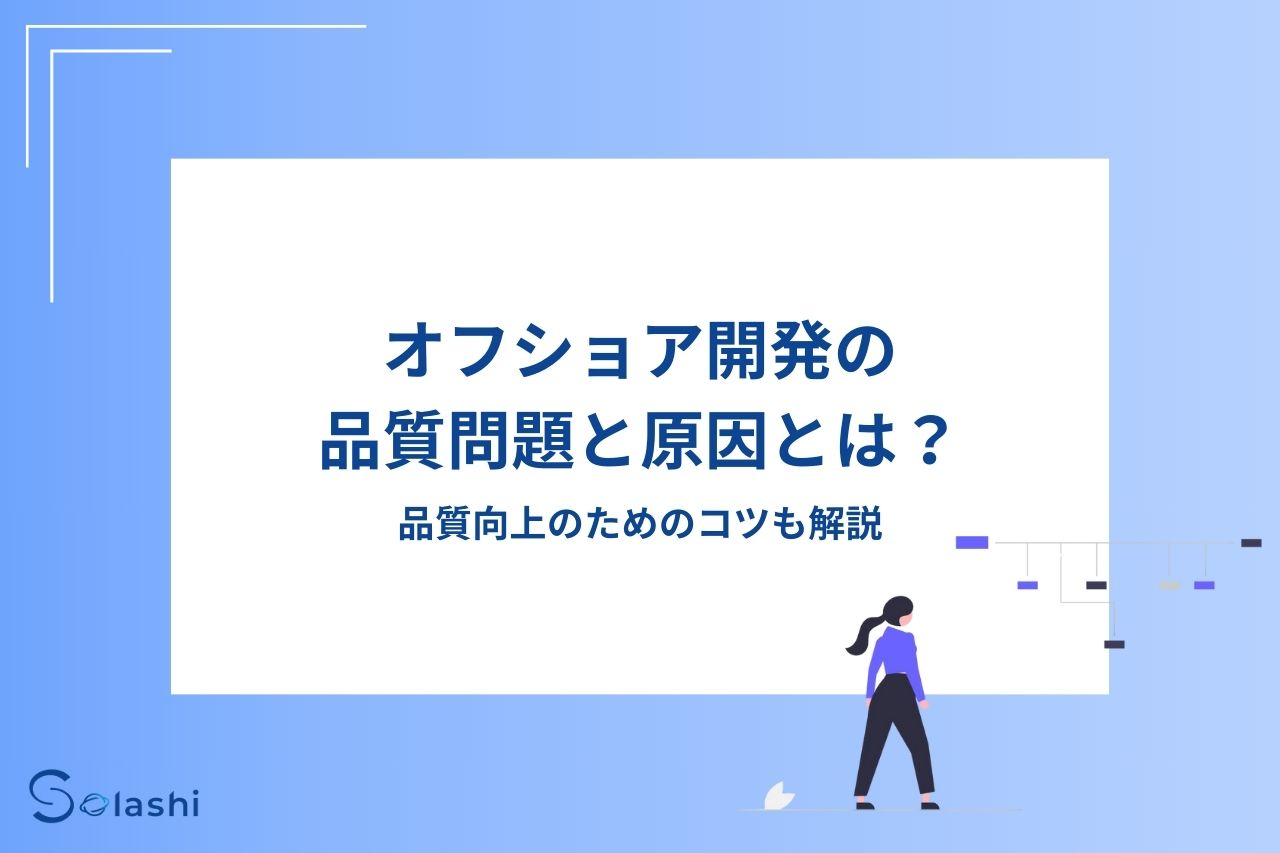“I am interested in offshore development, but I am concerned about the quality.”
“I would like to know the points to prevent quality deterioration in offshore development.”
In this article, we will address concerns or questions regarding the quality aspect of offshore development. We will discuss potential quality issues and thoroughly investigate the causes of quality deterioration.
In the latter half of the article, we will also introduce points to improve quality. Please use this as a reference to lead your project to success.

Akira Shimazoe
CEO of Solashi Japan LLC. Engaged in the development and operation of internal systems at Suntory. Founded Yper Inc., serving as CTO and CPO, contributing to product launch and growth.
Quality Management is One of the Challenges in Offshore Development
(Source: Offshore Development White Paper (2023 Edition) | Offshore Development.com)
According to the survey results summarized in the “Offshore Development White Paper (2023 Edition),” the most common challenge perceived by clients in offshore development companies is “communication skills.” “Quality management” ranks second.
Compared to the previous year’s survey results, the number of responses identifying quality management as a challenge has decreased. The quality of offshore development companies is on the rise, and we can expect continued improvements in the future.
However, despite gradual improvements in quality, many clients still feel that quality management remains a challenge.
(Source: Offshore Development White Paper (2023 Edition) | Offshore Development.com)
On the other hand, how do offshore development companies view quality management? The above chart shows the survey results on the strengths and weaknesses of offshore development companies.
It shows that many companies view “quality management” and “communication skills” as their strengths, which were the very issues that clients highlighted as challenges.
There seems to be a gap in understanding between clients and offshore development companies, which is why quality management is a concern for Japanese clients in offshore development.
Quality Issues That May Arise in Offshore Development
If quality management is neglected, the following quality issues may arise:
- Unreadable source code
- Frequent bugs during testing
- Programs that do not function as expected
- UX/UI designs that are unfamiliar in Japan
Unreadable Source Code
If proper quality management is not implemented, there is a possibility of overlooking unreadable source code.
Source code is a text file that describes the processes to make the program work according to the specifications.
In offshore development, engineers from the receiving company write the source code based on the specifications created by the ordering company or the project manager (PM).
Even if the source code is unreadable, the system itself might still function. However, it will take time for someone other than the author of the source code to understand it. Understanding the purpose of the source code and the flow of processes can also be difficult.
This could lead to the following problems:
- Bugs are more likely to be introduced
- It takes time to identify the cause of bugs
- Fixing the code takes time
Additionally, the poor readability of the source code could also lead to unnecessary sharing or communication, which may divert resources.
Frequent Bugs During Testing
Frequent bugs during the testing phase can also be a common issue.
- Repeated software testing, but the bugs are not fixed
- Frequent setbacks after moving to the testing phase
- Fixing one program causes issues in another program, lowering the quality compared to before the fix
If such bugs frequently occur, it could lead to wasted time and effort on fixes, resource shortages, and decreased motivation of engineers on-site. In some cases, deadlines and releases may be delayed.
Programs Not Functioning as Expected
Another issue that can arise is when a program does not function as expected. In system development, the process progresses based on requirements definitions and specifications.
If this information is not accurately communicated to the development team, the design and implementation will not progress well, and the deliverables will not function properly.
In the system development industry, it is often said that “programs do not run as expected; they run as written.” This indicates the problem of a program not functioning as expected.
UX/UI Designs Unfamiliar in Japan
Problems with UX (User Experience) and UI (User Interface) designs that are unfamiliar in Japan can also arise due to quality degradation in offshore development.
When using the deliverables, UI affects the “visibility,” and UX affects the “ease of use.” UI refers to the visual elements such as layout, font size, color scheme, fonts, images, and buttons.
UX refers to the experiential value users gain while achieving their goals, such as making a purchase or signing up.
If the UX/UI design is poor, issues like “the design of the deliverables being unfamiliar in Japan” or “being difficult to use intuitively for Japanese users” can occur.
Five Causes of Quality Deterioration in Offshore Development
Here are the causes of quality deterioration in offshore development.
- Unorganized development process
- Language and cultural differences
- Lack of quality management system
- Differences in design sensibilities
- Lack of instructions from the ordering company
Let’s take a closer look at these five causes.
Unorganized Development Process
If the development process is not organized, the project will not progress smoothly and could lead to quality deterioration.
The development process refers to the entire sequence of activities from requirements analysis, specification, design, coding, testing, release, and maintenance.
Especially in the upstream stages, if the details such as functionality and structure are not properly defined, it will affect the subsequent stages. Development will start without establishing clear design documents and quality standards.
As a result, changes in specifications may occur during development, and the following issues may arise.
- Fixing issues takes time, and to meet the deadline, quality may deteriorate
- The impact of specification changes is not understood, and critical bugs are found during pre-delivery testing
Language and Cultural Differences
Language and cultural differences between Japan and offshore development countries can also be a major cause of quality degradation.
Japanese often omit subjects in sentences, and conversations can still make sense without them. On the other hand, for foreigners whose native languages do not omit subjects, Japanese can feel difficult.
For instance, when someone says “I’ll check on it,” it may not be clear to foreigners who is responsible for the task.
Additionally, Japanese people are often known for their strictness about time. From a Japanese work ethic perspective, foreigners might feel that “there is a low awareness of schedules and deadlines” among them.
These language and cultural differences may cause misunderstandings, which can affect the quality of the work.
Lack of Quality Management System
If the quality management system is not properly organized, the risk of quality degradation increases.
A quality management system refers to the process of evaluating and improving quality at each stage, including design, implementation, and testing.
Reviews, unit testing, integration testing, and system testing are conducted at each stage. These tests are carried out based on test specifications that summarize the contents, environment, and results of the tests.
In quality management, it is important for each member of the project team to be aware of potential issues and ensure the quality of the deliverables.
If this system is not in place, the following problems may arise, leading to quality degradation:
- Problems are not reported immediately
- Previous test specifications are reused, and testing stages miss some crucial aspects
- Lack of coordination and conflict between development engineers and QA (Quality Assurance) engineers
Differences in Design Sensibility
Differences in design sensibility can lead to quality degradation in offshore development.
Design sensibility refers to the sense or feeling about aspects like “stylish,” “elegant,” “easy to understand,” “convenient,” which relate to appearance and ease of use.
This kind of design sensibility may vary not only among individuals within Japan but also between different countries.
For example, if you want to create a healthy design for a healthcare service, the colors and images associated with health differ by country, as shown in the diagram below.

Country-specific Features of Colors Associated with “Health”
Japan > Cheerful colors… Orange, Coral Pink, etc.
Thailand > Clean colors… White
China > Natural colors… Green, Yellow-Green
Vietnam > Strong colors… Red, Black, etc.
Due to differences in design sensibility, the expected design may not always be achieved.
It is essential to align on the imagery with the offshore development company by providing concrete samples and giving clear instructions regarding the colors and fonts to be used.
Lack of Instructions from the Client Company
A lack of instructions from the client company is also a factor contributing to quality degradation.
Japanese people often prefer vague expressions. The high-context communication style, which values the atmosphere of the situation, is a unique characteristic of Japanese culture.
Even if something is not explicitly written, local engineers might be able to infer and act accordingly.
However, when communicating with offshore development teams, relying on the same level of nuance as one would with fellow Japanese may not be effective.
- The intent is not conveyed, and the delivered output deviates from expectations
- The instructions are unclear, leading to a deviation from the desired quality level
There are cases where it’s only after such situations arise that one realizes the instructions were not properly conveyed.
Clear instructions such as “Verify functionality after completing this step” and “How to address any issues” are essential for offshore development.
4 Tips for Improving Quality in Offshore Development
Here, we will introduce 4 tips for improving quality in offshore development.
- Clearly specify the required quality
- Actively communicate with the site
- Introduce an optimal development process
- Strengthen the quality management system
Clearly Specify the Required Quality
It is important to clearly specify the required quality. Specifically, keep the following points in mind:
- Quantify it
- Visualize it using diagrams and graphs
- Write detailed specifications
- Provide specific feedback
As mentioned earlier, there can be significant language and cultural differences between Japan and overseas. We must also consider differences in design sensibility.
Assume that “thinking you’ve given instructions” will not be enough. Give clear instructions and thoroughly confirm that the other party understands.
Actively Communicate with the Site
To move the project forward smoothly, active communication with the offshore development company is essential.
Not only the minimum required communication, but also making efforts to build rapport with the onsite team through casual conversations is key. During feedback, make sure to maintain two-way communication rather than a one-sided approach.
If a trust relationship is built, the onsite team may approach you with concerns before problems escalate. This helps avoid quality degradation in advance and makes discussions for quality improvement easier.
If it’s difficult to meet in person, use web conferencing tools or chat tools to maintain communication.
Introduce an Optimal Development Process
To improve quality, introduce an optimal development process. It’s important to ensure that the development steps align with the actual procedure and there are no excessive or unnecessary steps in the development process.
In system development and software development, several approaches are available, and the method traditionally adopted in offshore development is “Waterfall Development.”
In this method, specifications are decided first, and then each step of the development process follows in sequence. While it’s easier to manage, the drawback is that if a problem arises, the next steps cannot proceed.
Recently, “Agile Development,” which involves releasing prototypes and then improving quality and expanding functionality, has been gaining attention.
With agile development, it’s possible to test and evaluate each function in stages even during the development process.
The benefit is that feedback can be incorporated as you interact with the system development company.
Strengthen the Quality Management System
Consider and implement a development process that suits your company.
Strengthening the quality management system is also important. Ensure that the development team and quality management team can collaborate effectively.
For example, it’s effective to involve QA engineers in the upstream processes. This allows them to create test policies and design test code that meets the requirements.
By strengthening the quality management system, it’s easier to adhere to quality standards at each stage and meet the set quality indicators and goals.
Moreover, with experienced senior QA engineers, it’s possible to build an optimal test process that aims for the best return on investment while consulting with the product owner or project manager.
If You Want High-Quality Offshore Development, Consult Solashi
If you are looking for high-quality offshore development, please consult Solashi Co., Ltd, a system development company in Vietnam known for its cost-effective solutions and smooth project execution.
Our company has many engineers who are well-versed in cutting-edge technologies such as blockchain and AI. Additionally, we offer flexible lab-based development and can also support the popular agile development method.
Moreover, our Japanese-speaking bridge SEs support the development by translating detailed instructions and requirements to local engineers, ensuring you won’t experience any communication gaps and can feel confident in your request.
If you are looking for an offshore development company with a solid quality management system, please feel free to contact Solashi Co., Ltd.

Akira Shimazoe
Representative of Solashi Japan LLC. Born in April 1989 in Fukuoka Prefecture. Graduated from the Graduate School of Information and Mathematical Sciences at Osaka Prefecture University. Joined Suntory System Technology Co., Ltd., an IT subsidiary of Suntory Holdings, in 2014. Broadly responsible for the development, operation, and implementation of vending machine delivery management, efficiency improvements, and sales management systems. Founded Yper Inc. in 2017, serving as CTO and CPO. Contributed to the launch and growth of the app-linked delivery bag "OKIPPA." Selected for Toyo Keizai's prestigious "Amazing Venture 100" and Forbes' "Forbes 30 Under 30 Asia 2019."

 日本語
日本語
